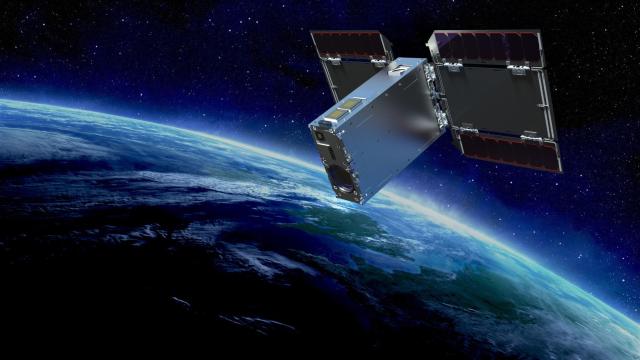Japanese company Pale Blue pulled off the first test of its experimental water vapour propulsion system, flying a nano-satellite for the first time in space using an environmentally friendly, cost-efficient propellant.
The water-based thrusters fired off for about two minutes on March 3, and data confirmed that the engine’s initial test was successful, the company announced on Monday. The propulsion system was tested on Sony’s first satellite for its Star Sphere project, which aims to provide more people with access to photography from space.
Star Sphere 1, also called EYE, launched on board SpaceX’s Falcon 9 rocket on January 3. The microsatellite, which has a camera mounted on top, will operate in orbit from a distance around 310 to 372 miles (500 to 600 kilometers) above Earth. The successful test means Pale Blue’s propulsion system is now ready to place the satellite in its target orbit such that it can begin operations later this year.
“Pale Blue successfully developed and operated its water-based thruster, and with this, the company takes a huge step forward towards orbit insertion for [Star Sphere] Project,” Jun Asakawa, CEO and Co-Founder of Pale Blue, said in the company’s statement.
Pale Blue aims to provide an alternative way to keep satellites afloat in Earth orbit. Water can be used as a green propellant since it is made of hydrogen and oxygen (both are used as propellant), creating a cheaper and safer option for small spacecraft. The propulsion system simply splits the water into hydrogen and oxygen while in space, burning them as fuel. But using water does have its limits in terms of the size and weight of the spacecraft it can power and how much energy it can actually provide; accordingly, the technology is best used for tiny, low-cost satellites, according to NASA.
The space agency itself is experimenting with water-based thrusters on board a swarm of CubeSats for NASA’s Pathfinder Technology Demonstrator, the first in a series of missions launched aboard a Falcon 9 rocket in January 2021. Aside from Pale Blue, another private space venture, Momentus, is also preparing to test a water-based propulsion system on board an orbital transfer vehicle in the coming weeks.
Japan’s Pale Blue, along with other entities using water as fuel, is looking to reinvent the business of small satellites, making them cheaper, more efficient, and perhaps a little more friendly to the environment.
More: Alarmed by Satellite Constellations, Astronomers Petition the UN for Help
